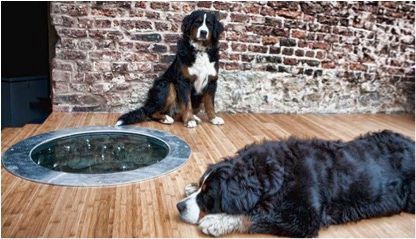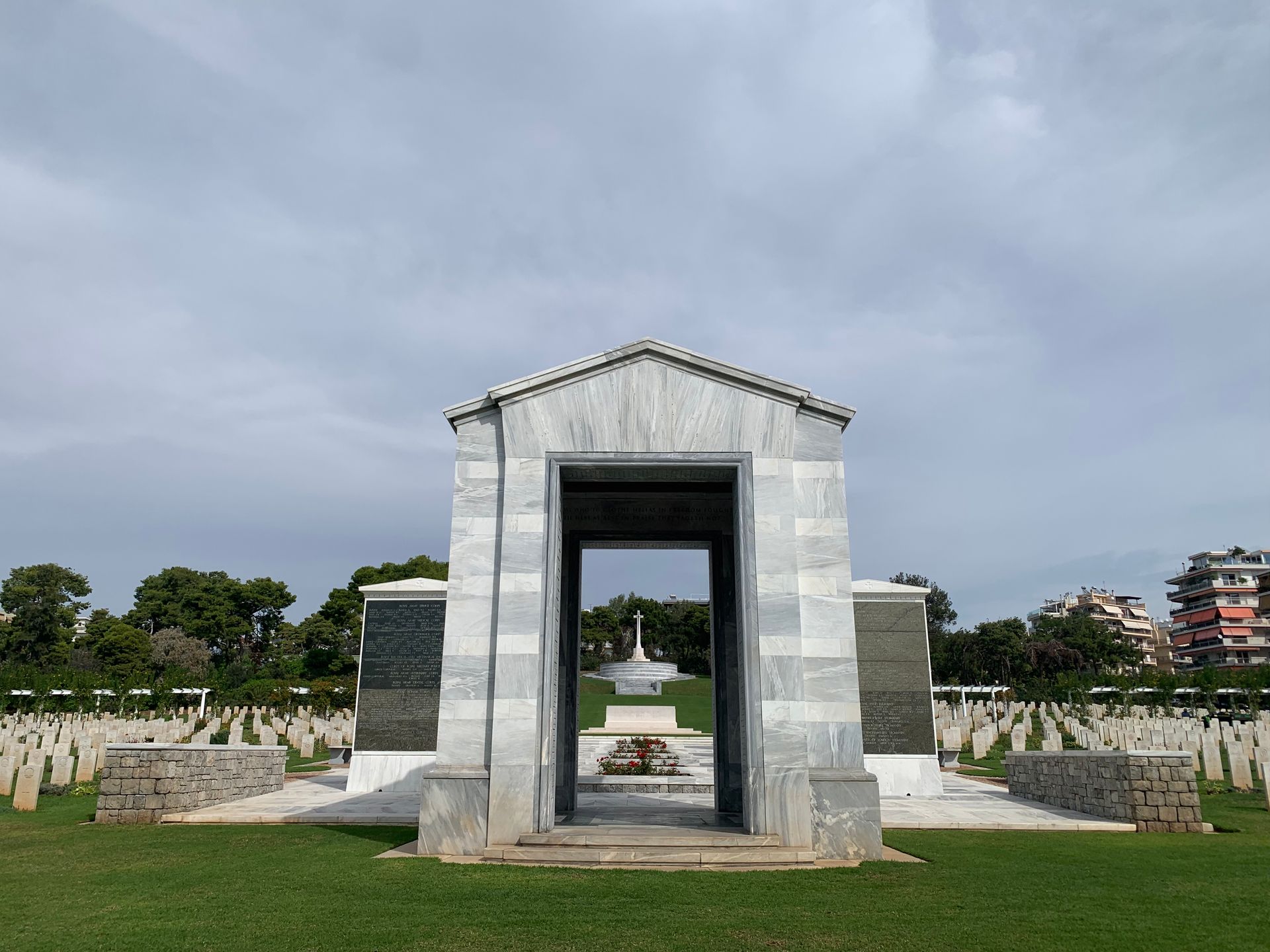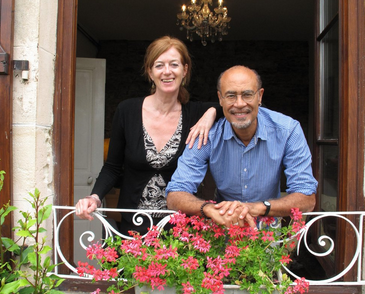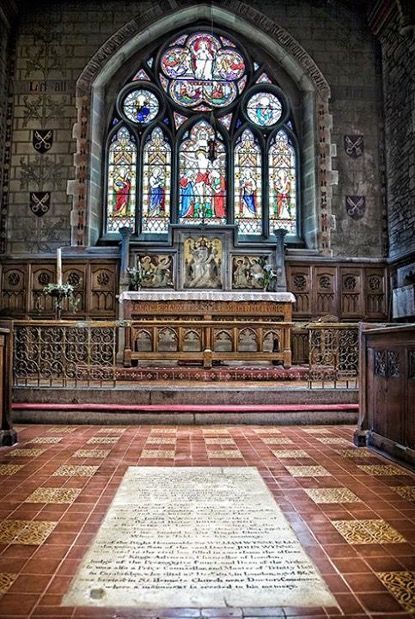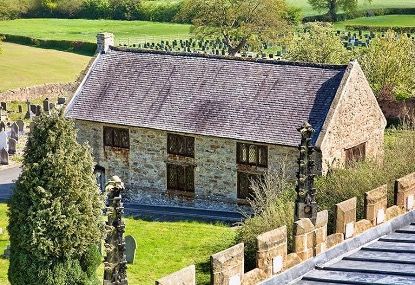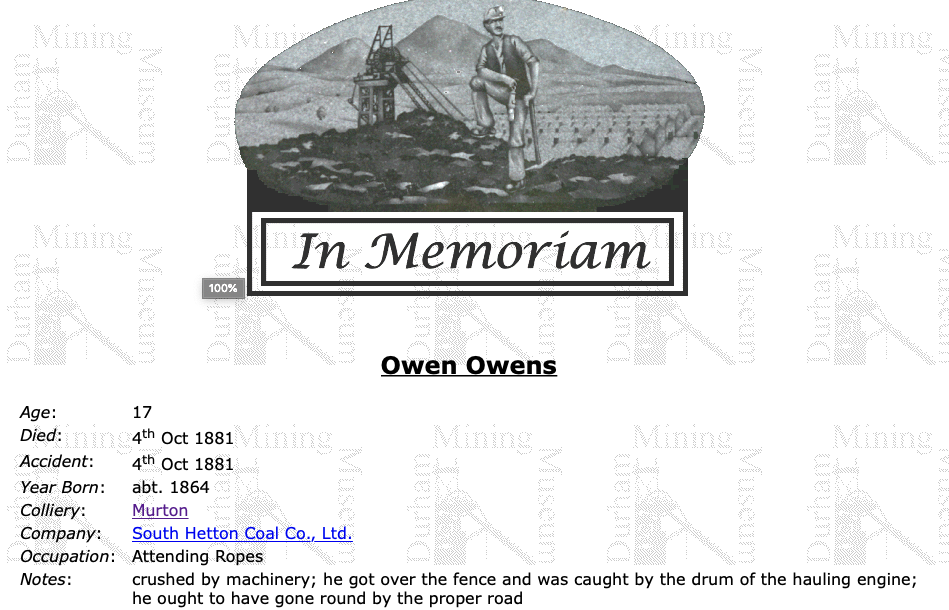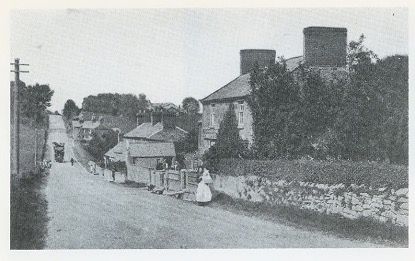When renovating the house, I found an old well. 60 feet deep or more… now safely covered and sealed over with glass, guarded by two Bernese Mountain Dogs... they spend many hours here… what can they sense that we don't?
In times gone by, there was a great belief that all wells were sacred places and that special properties pertained to them. ‘Pre-Reformation,’ the Roman Catholic Church embraced many pagan practices and these practices were adopted into ‘Church belief.’ These beliefs remained unaltered post-Reformation and the church embraced the healing qualities of wells and so ‘wells’ morphed from Pagan Holy places to Christian Holy places. Wells associated with religion therefore continued to attract sufferers, in some cases until the present day – as is the case with St. Winifred's Well at Holywell which I've already described and which features in my latest book due for publication soon. It is no coincidence that the well at the rear of The Old Police Station in Northop lies within what would have been the old perimeter of St Eurgain and St. Peter’s Church in Northop.
Excluding the well at The Old Police Station, fifty-two wells have been identified in Flintshire. And of these twenty-seven bear the names of saints. Eight are dedicated to St. Mary and four to St. Michael. Two wells called Ffynnon Fihangel, one in Bodfari and the other in Caerwys parishes, were said to cure sore eyes and warts, whilst victims of rheumatism and nervous disorders resorted to Ffynnon Asa in Cwm near Dyserth.
A combination of Pagan and Christian were observed at Ffynnon Ddier in Bodfari. Here the poorest in the parish offered chickens - a cockerel for a boy and a pullet for a girl. After proceeding around the well nine times, children were then dipped in three corners of the well in order to prevent them from crying at night.
The Well at The Old Police Station has, for the first time in years, water that flows into it – from where is not known. However, the geology of Northop and surrounding areas is well known; the area being underlain by Carboniferous Sedimentary Rocks – Coal, Sandstone and Limestone, the latter of which is a very porous rock and indeed makes up the majority rock of Halkyn Mountain. This means that water in this area is quite likely to flow underground with ease and hence fill a well.
For sure the well here would have once been a holy well. Many years ago, I had an interesting conversation with local historian and writer Rowland Tennant who has researched Saint Eurgain, after whom the Church in Northop and indeed many other place names in the area are named.
More to come on this in the coming days.
#bernese #bernesemountaindogs #history #northop #flintshire #writerslife #writingcommunity

